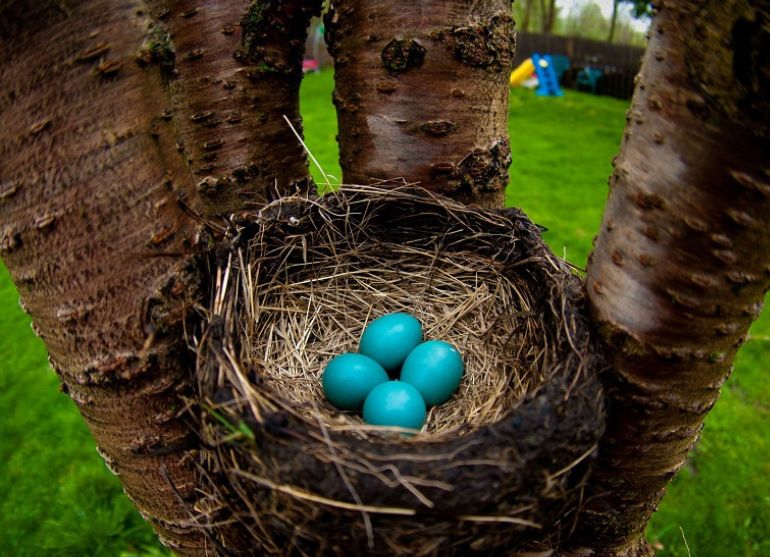Did you know that not all birds lay white eggs like those you eat early in the morning during breakfast?
Rather, many birds lay blue eggs, one of the many colors of eggs made by birds. As a matter of fact, the eggs laid by birds are actually of varied colors, from blue to white and brown to beige.
Many a time, you’ll see green eggs in some nests as well. In this article, you will learn about the birds that lay blue eggs and their characteristics in detail.
Hop on, and by the end of this article, you will be well aware of what bird lays blue eggs and the significance of the pigment causing this coloration.
What Birds Lay Blue Eggs?
Curious yet? The most common species known for laying bright blue eggs are Blue Jays, American Robin Birds, Starlings, Red-winged Blackbirds, Dunnocks, Blue-footed Booby, House Finches, Common Myna, Magpie, Emus, Snowy Egrets, Great Tinamou, to name a few.
Mentioned below are the interesting characteristics of birds that lay blue-speckled eggs.
Blue Jays
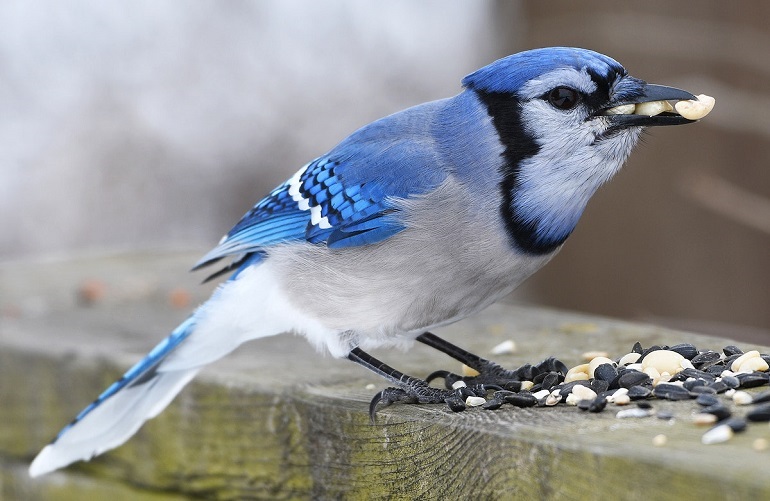
The Blue Jay is one of the noisiest birds out there, but at the same time, they are the liveliest! When they nest in your backyard, you actually feel the life around you, thanks to their constant chirping.
These birds lay blue eggs that are around 1.3 inches long.
The width of these eggs is somewhere around 0.7 inches, which makes them one of the cutest eggs out there! If you have some blue jays nesting in your backyard, you would be lucky to see these extremely adorable bird eggs that are unique in appearance!
What makes Blue Jays’ eggs even more artistic is the presence of little brown or grey spots around them. At times, they may appear as green eggs initially and would turn blue later on.
These females don’t lay a lot of eggs. Rather, they make around four to seven of them while in the nest. Actually, parent birds take care of a maximum of two broods each season, providing them with the best possible care.
The female Blue Jays spend most of the time guarding the eggs, and the males supply all the food. These blue eggs hatch between seventeen to twenty-one days.
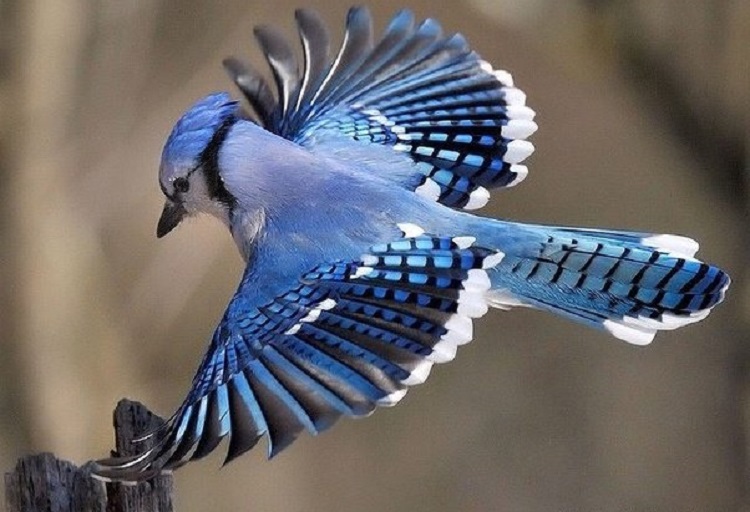
Though Blue Jays make sure to make their nests in the safest possible places, these nests are always in danger of a predator’s attack. The predators that eye these eggs are snakes, raptors, crows, cats, and squirrels.
The biggest problem of Blue Jays is that the predators of their blue eggs are both on the ground (snakes/cats) and in the air (osprey/crow), which are consistently looking forward to attacking the nest.
To avoid these attacks, Blue Jays try to lay eggs mostly in the shrubs or in the middle of green trees to keep the nest concealed.
Mostly, the Blue Jays start looking for a nesting place as soon as February starts. Once the right place is found, the pair builds the nest, and the female lays the eggs in March.
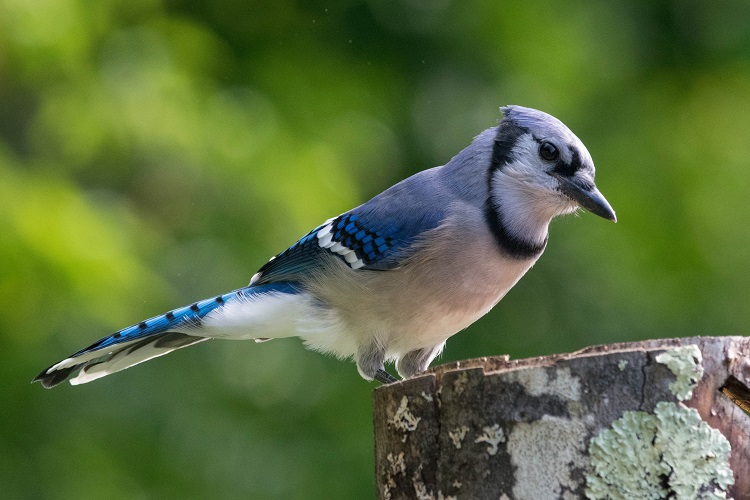
If you are lucky enough to spot the nest of the Blue Jays species in which you see these adorable eggs of blue color, it’s best to leave them alone.
You may feel the nest is abandoned, but that’s not the case. These birds never abandon their nests and are always nearby, waiting for you to leave.
As a matter of fact, you may also get attacked if you don’t leave the nest soon, as these birds are super territorial and quite protective of their blue eggs.
American Robin Bird
The American Robin Bird is yet another bird species that produces blue eggs. These pale blue eggs are easily identifiable from afar owing to their distinct appearance.
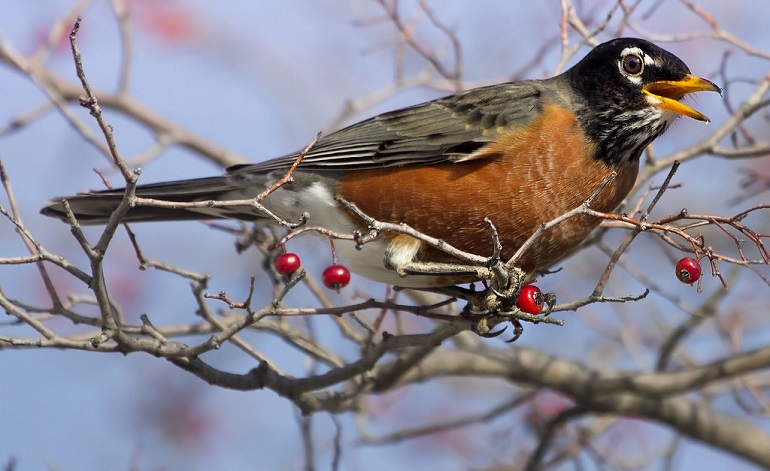
Biliverdin, a particular pigment in the eggs, is why they have a blue color. When the female bird lays blue eggs, this bile pigment, which is green in color, covers them entirely. This is also the main reason these eggs mostly appear blue-green initially.
Often, people spotting these eggs in urban and suburban areas tend to get confused as the shade of these eggs changes according to the amount of pigment deposited on them.
Sometimes, they initially appear bold blue, and other times, they showcase icy bluish-green color or pale blue otherwise.
Eggs with a high amount of deposits are really, really dark blue in color! According to some studies, these dark-colored egg shells protect the eggs’ interior from the sun’s harsh UV rays while warming up the egg and letting it hatch quickly!
As the embryo is extremely fragile and weak, it needs protection from sun rays! To ensure its security, this hard outer shell works as a shelter.
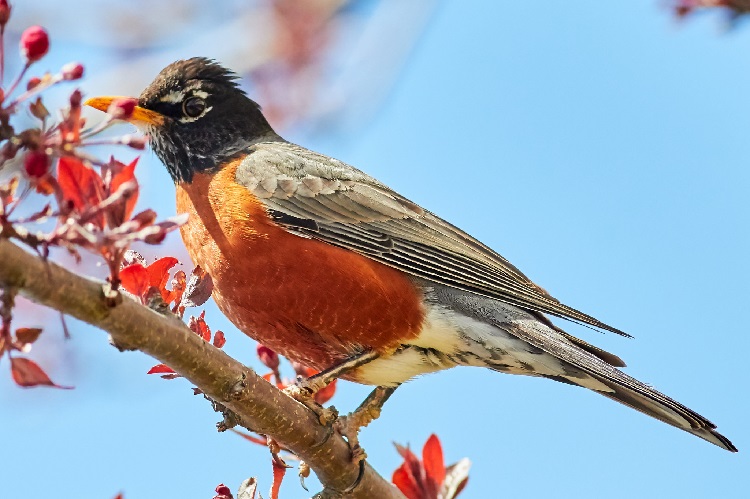
As American Robins lay blue eggs, and some of them are darker than others, it’s also believed that those that are small in size are bluer in color.
At the same time, the eggs laid first amongst the brood are darker in shade compared to those that come later.
A lot of studies have also showcased that mother American Robins, who took the healthiest diet and had nutritious meals, successfully laid dark blue-colored bird eggs.
In contrast, those who didn’t have a good diet ended up laying light-colored eggs.
Starlings
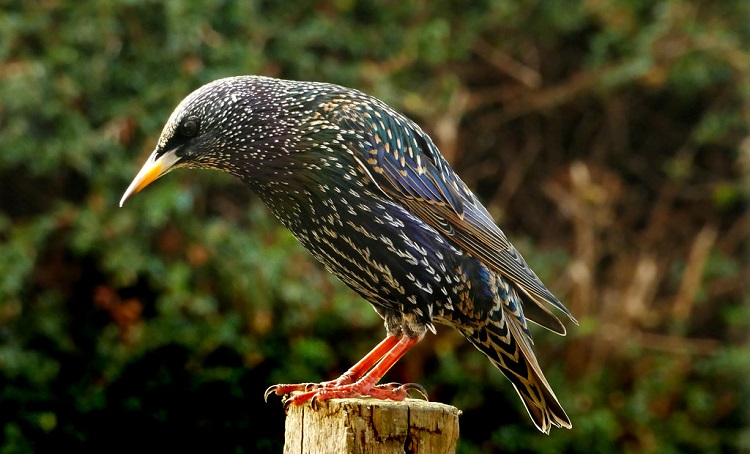
Starlings are super-pretty birds and are a treat to the eyes. There is no denying the fact that they are a gift of nature to human beings who love aesthetically pleasing sights.
On top of that, European Starlings lay eggs of blue tones, which makes them even more special.
In a single clutch, European Starlings lay nine eggs in their nests in urban and suburban areas. The color of each of these eggs may be different from the others.
Where some of them could be pale blue, there are great chances you would see others be green in color.
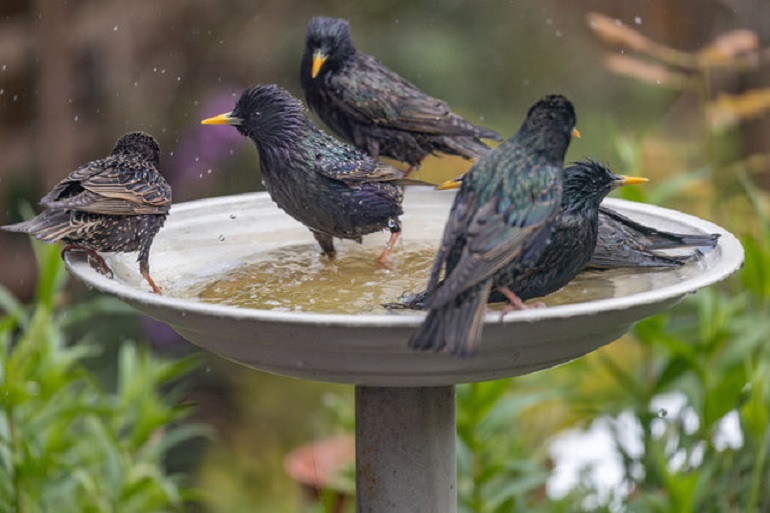
It’s the nest of the Starling bird where you would find blue eggs. These are around 0.8 inches in size with no markings on them.
Alongside this, European Starlings’ eggs are slightly glossy, but they are much smaller when compared to the eggs laid by Robins.
Starlings make their nests inside the holes of the trees and mostly look for cavities to live in. At times, their nests are also found in the spaces of old houses. They also tend to return to their old and lay their eggs where they previously had.
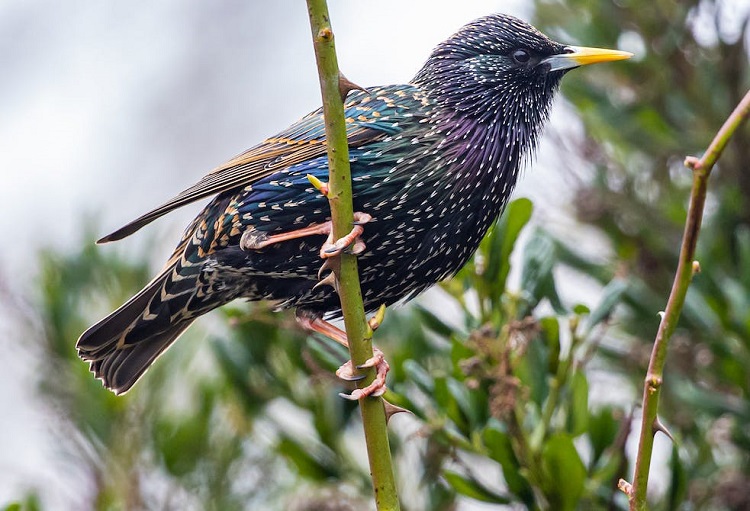
Red-winged Blackbirds
Eggs laid by Red-Winged Blackbirds come with extensive designs. Mostly, they are greenish blue in color, and you can see some brown markings on them. At times, they also appear grey with blackish marks all around them.
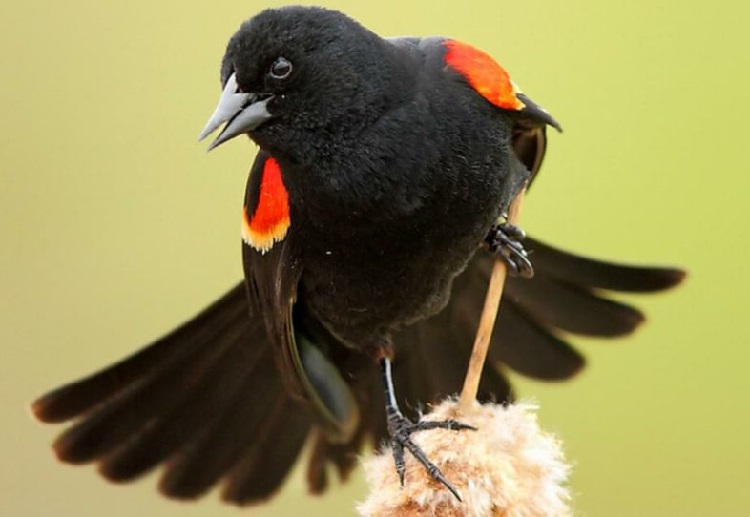
These birds with colored feathers showcase the arrival of spring in the truest sense. Being the native birds of North America, they are seen there in great abundance.
Owing to being super loyal and territorial, they refuse to leave their nests and reside in them for long durations. You would see them flocking around the marshland areas.
While choosing a nesting spot, these birds prefer staying near a water source. Also, they have strong familial bonds, and the species nest close to each other.
Finally, their cup-shaped nests are where these birds’ eggs stay till they are hatched.
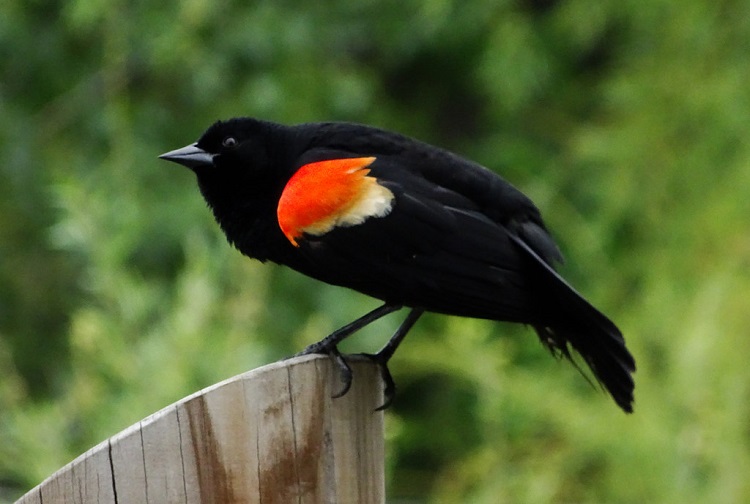
This bird mostly returns to the same nest in the next season if that’s still there! The mating season lasts from May to June.
The incubation time is around 11-14 days, while the nesting period is somewhere around 14 days. Though these birds lay around two to four eggs in a clutch, the females have one to two broods of babies only.
These birds lay small blue eggs with a 12 cm outer shell while the inside dimension is 7.6 cm with a depth of around 7.1 cm. They start nesting late in March and lay their eggs in mid-April.
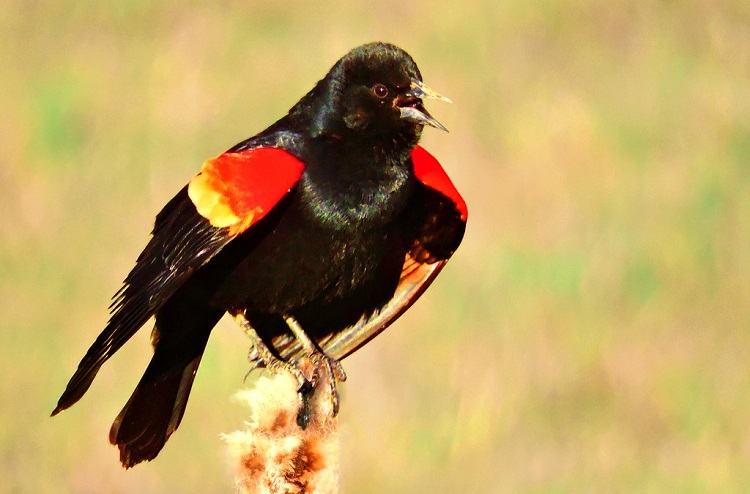
The Red-Winged Blackbirds are not loyal like most common birds. Rather, they mate with a different partner every year.
Hence, they are polygynous birds, and you would be amazed to know that a male can have as many as fifteen female partners EACH SEASON!
Dunnocks
Dunnock birds showcase an uncanny resemblance with the House Sparrow and have similar feathers.
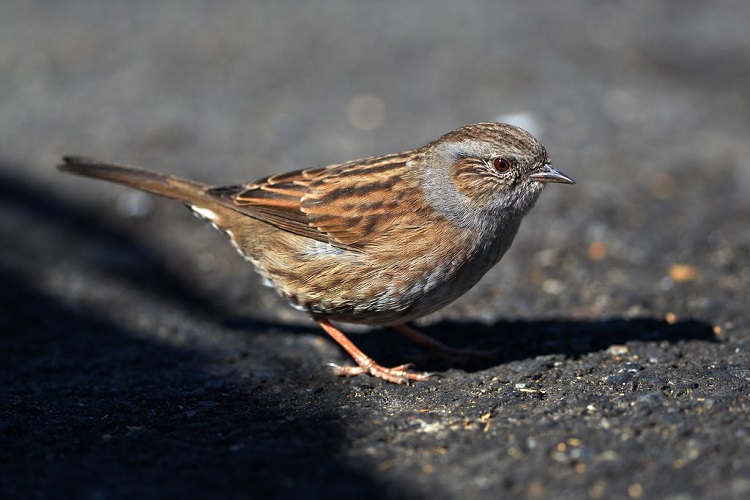
A lot of people tend to confuse them with each other. However, the biggest difference between these two species is that where the House Sparrow lays white eggs, the Dunnock birds lay blue eggs.
Another name for this bird is the Hedge Sparrow. They prefer trees when it comes to constructing nests. Most of the time, it’s the grass or the leaves of thick trees where you would see their nests.
These are medium-sized eggs with dimensions of 1.9 x 1.5 cm. This makes these eggs super small but extremely cute in appearance! Each clutch can have as many as four to five eggs.
Being melodious songbirds, they are adored by nature lovers. Their eggs are as adorable in appearance as they themselves are.
Mostly, they are turquoise in color and stand apart from other birds’ eggs owing to their looks.
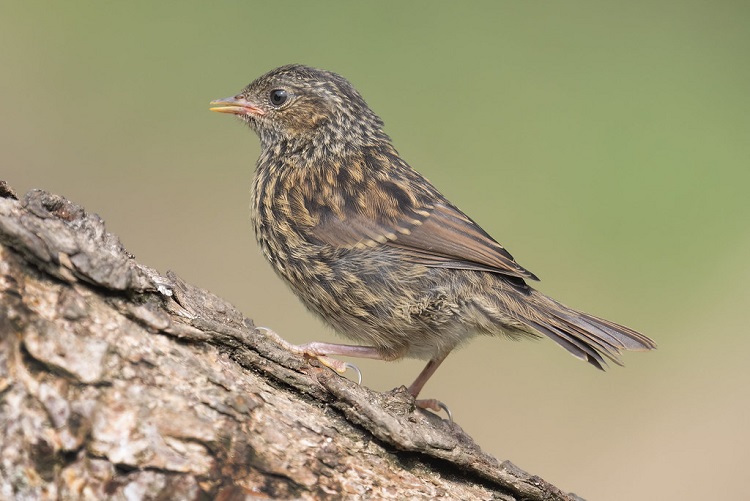
You may only spot these eggs in the nest if you are camping in a dense forest. These nests are close to the ground but still hidden in the green to avoid any predators attacking the eggs and young birds.
Females incubate the eggs, while the breeding season is somewhere around mid-April.
Most of the time, the first brood of Dunnock birds gets attacked by the predators and is lost. One major reason could be their attractive appearance that entices the ground predators.
Blue-footed Booby
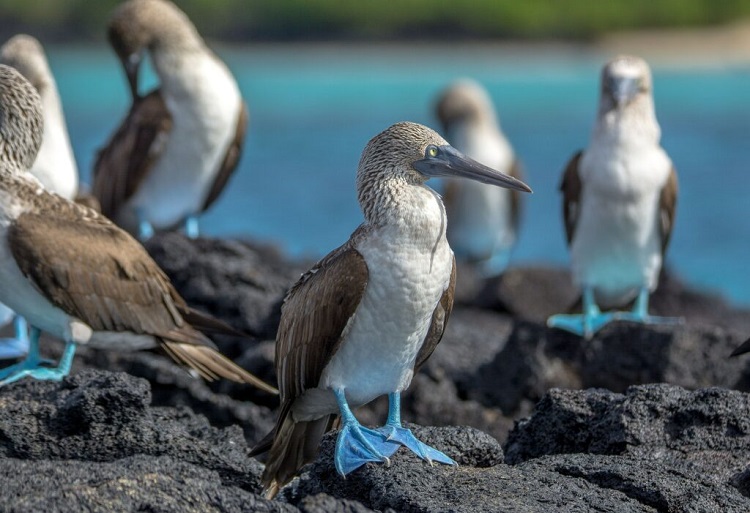
This seabird is also one of those rare species that lay blue-colored eggs. The long neck and super sharp bill of Blue-Footed Boobies set it apart from other birds.
But that’s not the only distinction these birds possess. Rather, it’s actually the blue, webbed feet that make them appear so noticeable.
In a single clutch, the Blue-Footed Boobies lay as many as three eggs, mostly green or pale blue. You would be amazed to know that these eggs take as many as forty-five days to hatch.
This is probably one of the longest durations bird eggs take to hatch.

With the help of their feet, both parents incubate these light blue eggs. Once the hatchlings are out, it’s the mother who takes care of them while the father looks for the food.
Great Tinamou
These are the native birds of South America and are pretty unique in terms of the eggs they lay, which showcase various shades and colors.
They are super glossy and shiny, while their colors range from blue to dark brown to violet and pink.
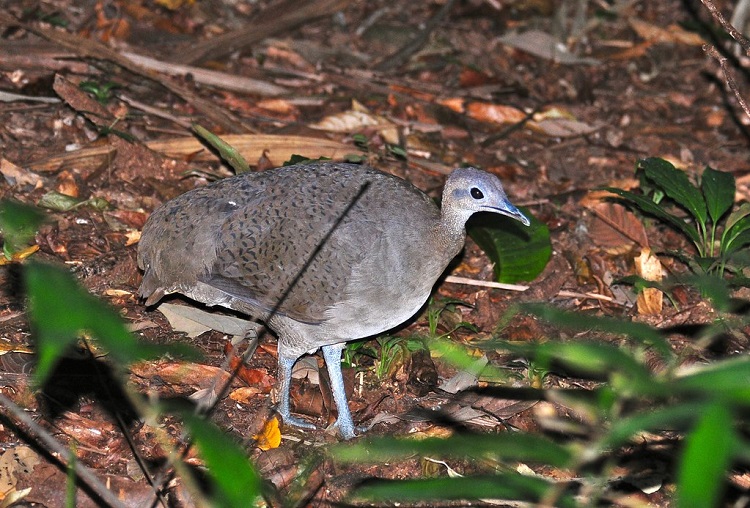
Owing to being super glossy, these eggs don’t blend in the surroundings but rather stand out. Also, these are ground dweller birds with their nests on the ground.
Nanostructure coloration is a pigment responsible for the varied colors these eggs show. In fact, under this pigmentation that gives the egg a unique shade, the egg is of the normal blue color.
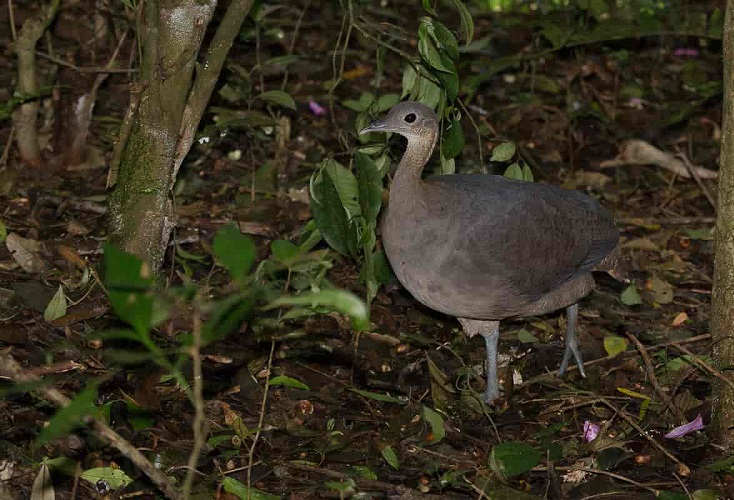
The nanostructure of the shell is also the major reason for its glossiness. These birds try to camouflage the eggs by covering the nest with green grass or leaves to avoid predators’ attacks.
Common Myna
Pretty common all across Asia, the Common Myna lays turquoise-colored eggs that also appear greenish at times. The female Common Myna lays two to five eggs in each clutch, and they all may have different colors! Their shells also have brown spots on them.
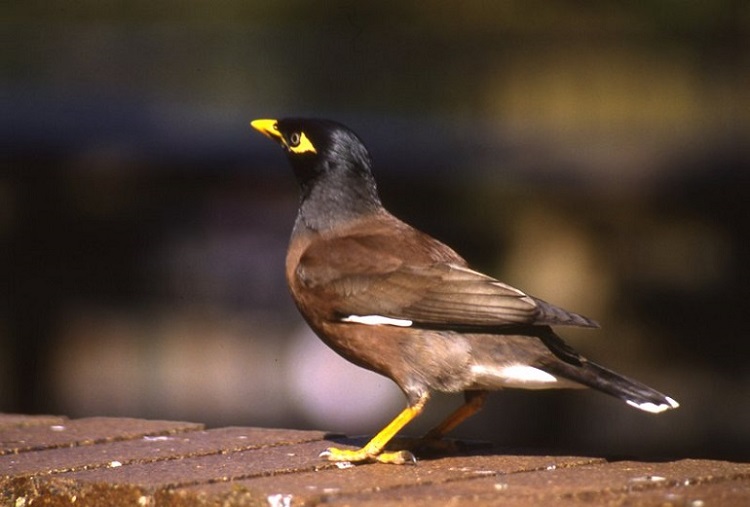
These birds breed twice a year. Most of the time, Common Myna prefers doing so in the same nest and has quite a lot of heavy regard for their place of living!
What sets Common Myna apart from others is their ability to imitate human speech.
Blue-gray Gnatcatcher
This is a small and petite bird that has very few feathers on its body! Blue-gray gnatcatchers are the native birds of North America, which are easily identifiable thanks to their long tails.
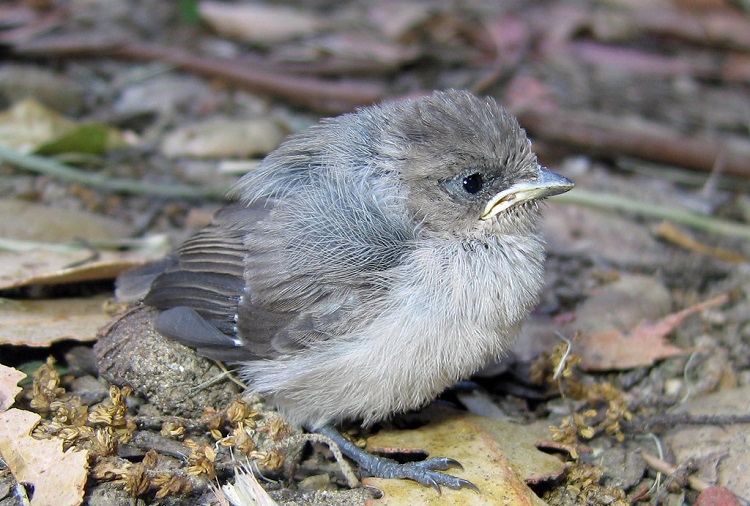
The Blue-Gray Gnatcatcher is also one of those birds that lay blue eggs. This bird species fights till the end to protect its adorable eggs from attackers!
In each clutch, these birds lay as many as five eggs in a single go. These eggs are pale blue in color and have brown markings all around them. Sometimes, these spots appear red as well! Also, these eggs are pretty small, with a length of only 0.6 in.
The incubation period needed for the eggs of this bird species is only fifteen days; Jays and Woodpeckers act as their biggest predators.
Gray Catbirds
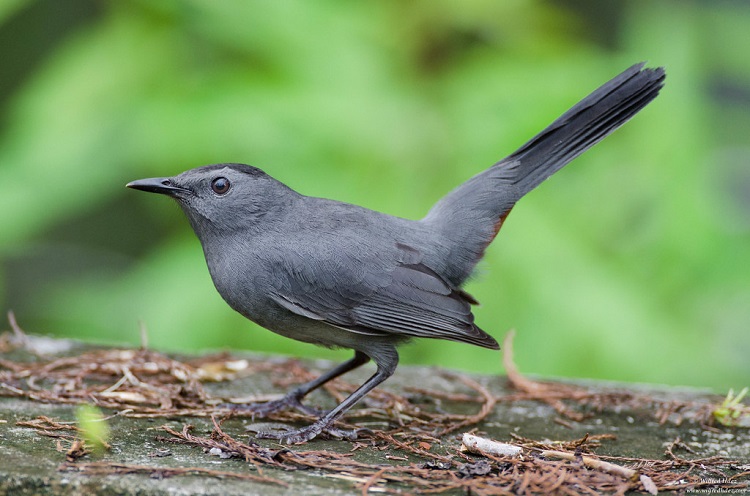
This bird species is called Gray Catbirds because, at times, it sounds like the cat’s meow! They lay eggs that are blue in color, and each clutch may have around six eggs.
The exact color of these eggs is turquoise-green. Sometimes, there are brown speckles on them as well. The mating season is from April to August, after which they lay blue eggs.
This pigmented shell saves the yolk from harmful sunlight rays and keeps it warm and comfortable.
What Is the Difference Between Blue Eggs and Regular Colored Bird Eggs?
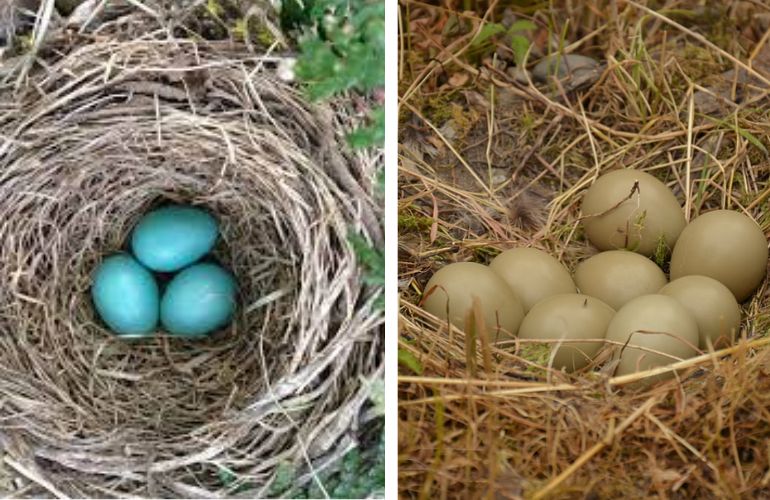
The difference between the blue and regular-colored bird eggs is nothing but the color itself.
The bile pigment biliverdin is a special element that is a part of the eggs that are blue in color. This pigment decides the color of the shell, which is mostly anything other than white!
Are Blue Bird Eggs Healthier?
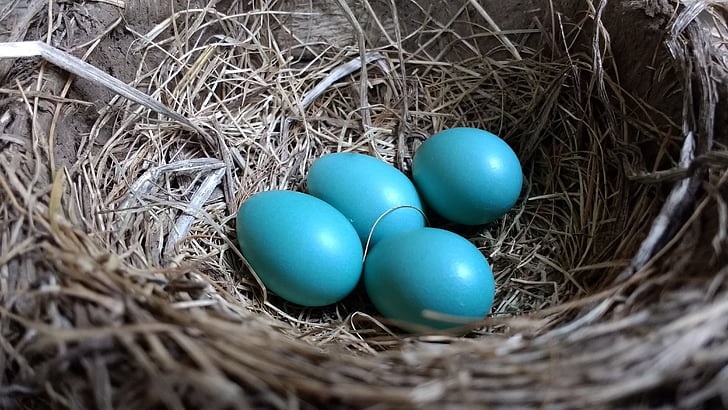
Though a lot of people consider blue eggs to be healthier than those with other colors, it’s not really true! The egg’s color doesn’t define the nutritional benefits it offers to those who consume it.
The regular white chicken egg that you consume on a regular basis actually gives you the same health benefits that a differently-colored egg would.
Hence, if you consider blue eggs healthier than white eggs, you are definitely wrong!
How Do the Colors Protect the Eggs from the Sun?
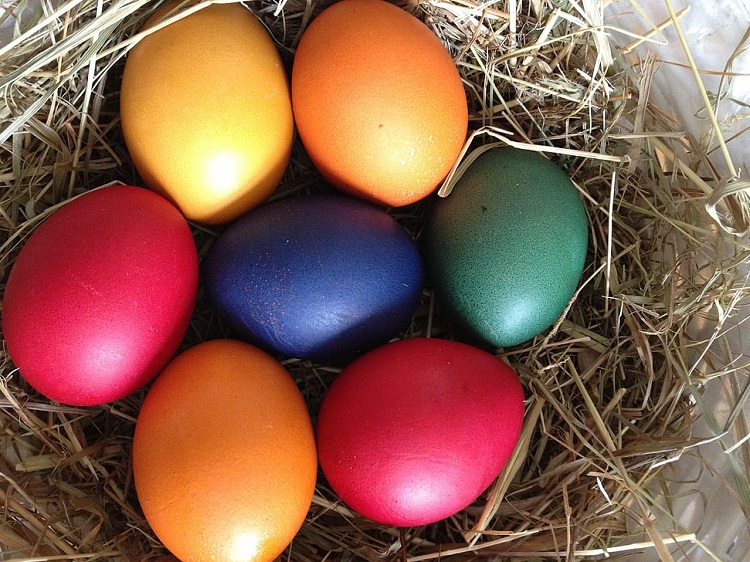
The color of an egg has a lot to do with its protection and safety. The dark pigment of the blue eggs keeps the inside warm.
Hence, even when the environment is cold or prone to rain, the warmth offered by the shell heats the yolk pretty fast!
As the cold climates get low sunlight, the chances of natural heat coming toward the eggs are low. The pigment then takes over the charge of keeping the shell warm. The darker the shell, the more it absorbs light from the sun.
At the same time, if the blue eggs are laid somewhere that’s already pretty sunny and hot, this pigment saves the shell from the sun’s harmful radiation.
An inherently thinner eggshell can get affected by accident easily. This pigment supports the thinner shells, protecting what’s inside.
Clues in Eggshell Colors
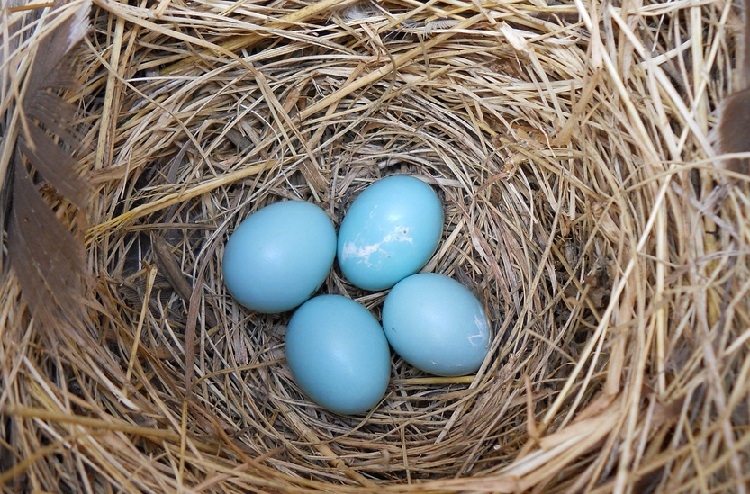
Eggshell colors actually give clues about the species of birds that have laid them.
So, if you come across an abandoned or vacant bird’s nest with a few blue-colored bird eggs lying in them, the appearance of those eggs can actually let you know which bird must have laid them.
Conclusion
A lot of people are unaware of the fact that many species of birds lay eggs that are blue in color. Thus, when they spot a bird’s nest with a blue egg, they are obviously startled.
Mostly, the birds residing in the northern parts of the Earth lay blue eggs, as the pigmented shell protects the insides!
Hope you had as much fun reading the article as I did writing it for you!


